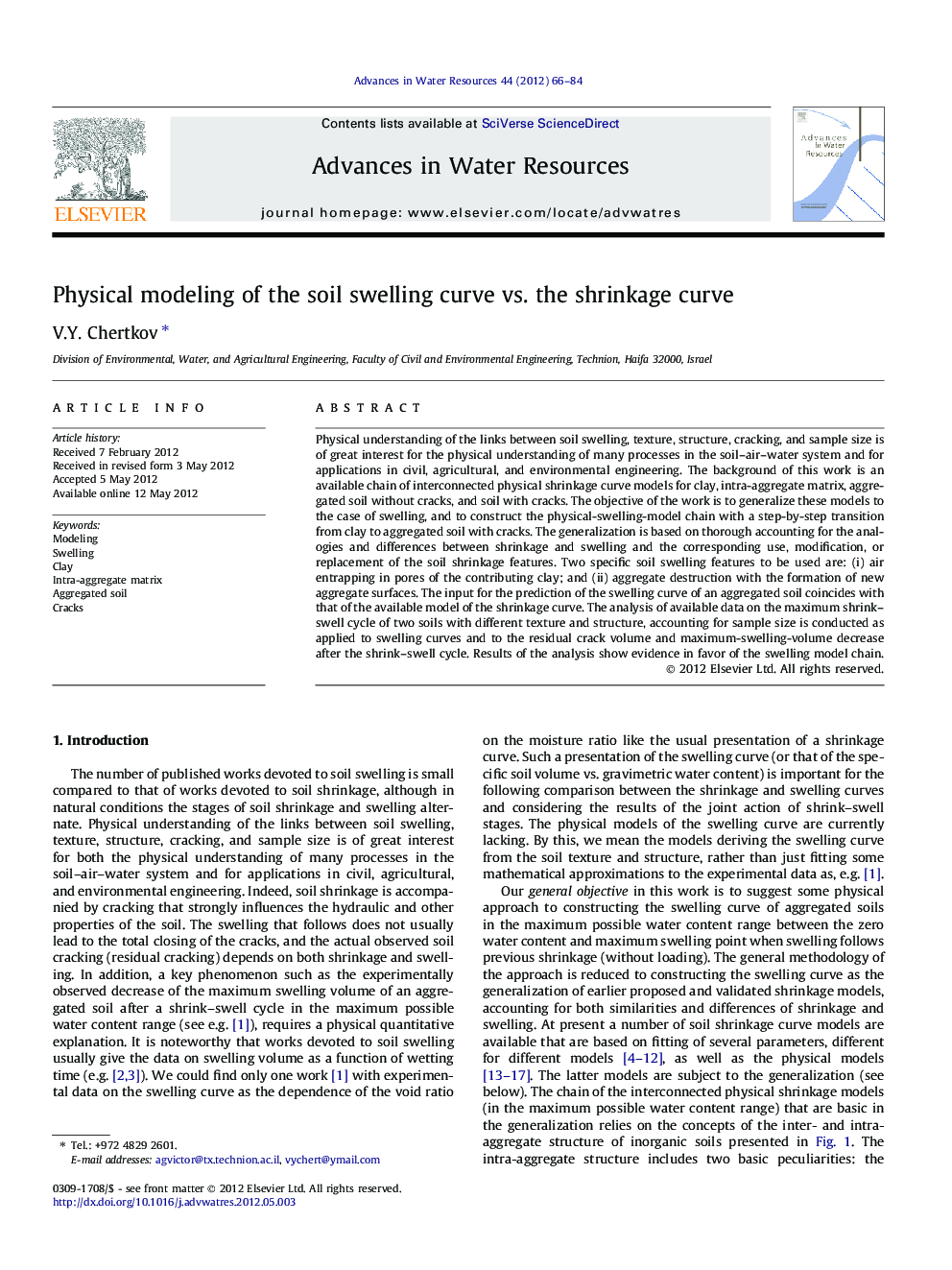| Article ID | Journal | Published Year | Pages | File Type |
|---|---|---|---|---|
| 4525886 | Advances in Water Resources | 2012 | 19 Pages |
Physical understanding of the links between soil swelling, texture, structure, cracking, and sample size is of great interest for the physical understanding of many processes in the soil–air–water system and for applications in civil, agricultural, and environmental engineering. The background of this work is an available chain of interconnected physical shrinkage curve models for clay, intra-aggregate matrix, aggregated soil without cracks, and soil with cracks. The objective of the work is to generalize these models to the case of swelling, and to construct the physical-swelling-model chain with a step-by-step transition from clay to aggregated soil with cracks. The generalization is based on thorough accounting for the analogies and differences between shrinkage and swelling and the corresponding use, modification, or replacement of the soil shrinkage features. Two specific soil swelling features to be used are: (i) air entrapping in pores of the contributing clay; and (ii) aggregate destruction with the formation of new aggregate surfaces. The input for the prediction of the swelling curve of an aggregated soil coincides with that of the available model of the shrinkage curve. The analysis of available data on the maximum shrink–swell cycle of two soils with different texture and structure, accounting for sample size is conducted as applied to swelling curves and to the residual crack volume and maximum-swelling-volume decrease after the shrink–swell cycle. Results of the analysis show evidence in favor of the swelling model chain.
► Analogies and differences of soil shrinkage and swelling are analyzed. ► A number of concepts of soil shrinkage are generalized to the swelling case. ► Specifically swelling features are air entrapping and aggregate destruction. ► Model predictions are based on soil texture, structure, and sample/layer size. ► Crack and soil volume for the maximum shrink–swell cycle are predicted.
